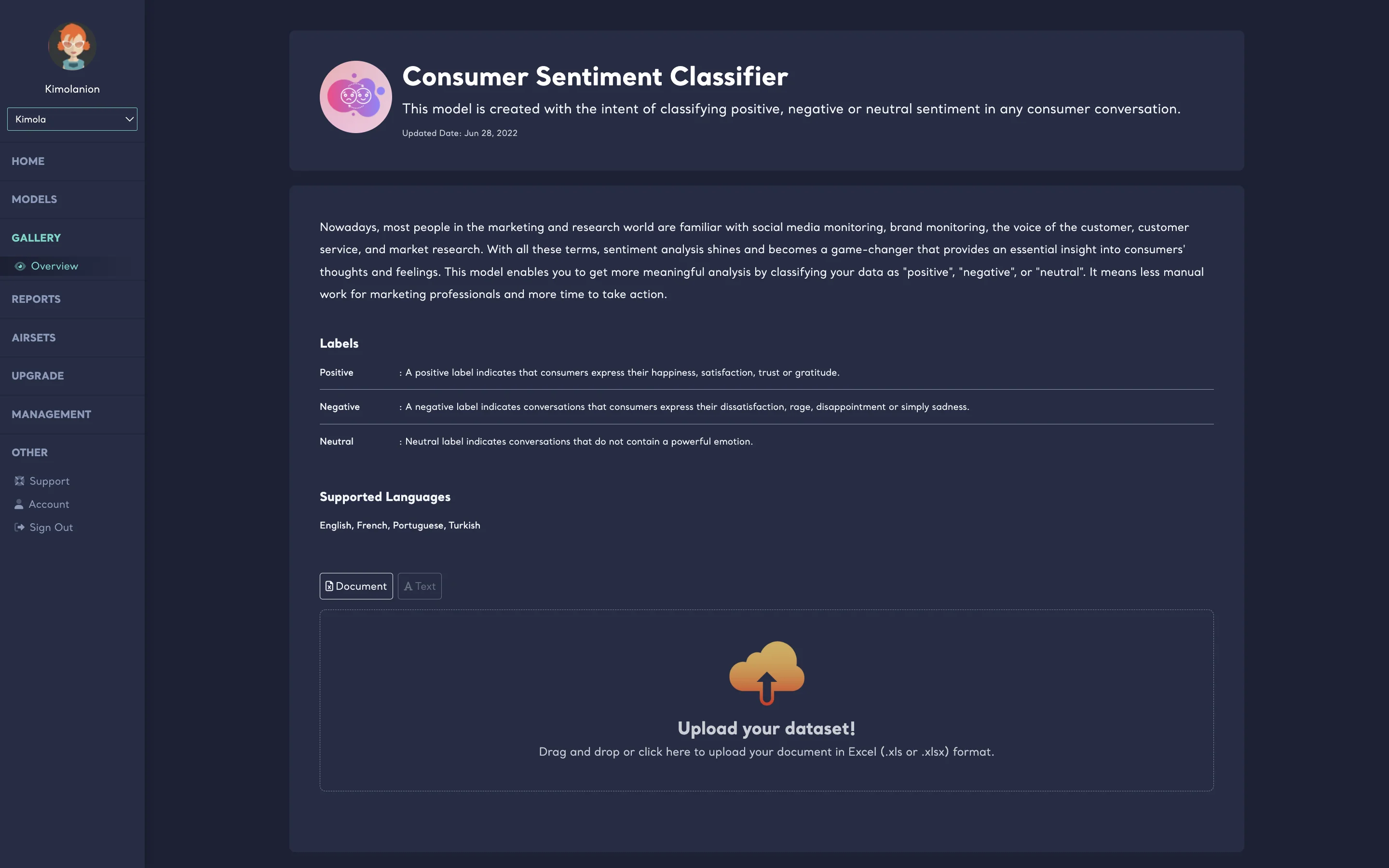What is sentiment analysis?
4 mins read - Updated on Mar 05, 2024Did you know that you can learn the general emotional opinion of people about a topic thanks to text data, which has become more critical with social media? Sentiment analysis is a machine learning concept developed for precisely this. The machine learning model, trained with a training set, can analyse the human inputs and distinguish the emotional poles in the discourses as positive, neutral and negative.
What is Sentiment Analysis?
Sentiment analysis is one of the most efficient analysis methods in marketing for brands to achieve actionable insights by reading their consumers' minds. Sentiment Analysis is the most common text classification tool that analyses text data and states whether the fundamental sentiment is positive, negative or neutral. Also, it is a type of analysis that can measure emotions (fear, anger, happiness, sadness, etc.), intentions (interested and not interested) or urgency (urgent and not urgent).
The perception of emotions in text data is a case that differs from person to person due to cultural and social background. Thus, you need an NLP machine learning model which is trained with bias-free data. You can learn how to create an NLP dataset from any source on the internet, or you can visit Kimola Cognitive's gallery by clicking here to see the machine learning models prepared by Kimola and use them for your sentiment analyses.
Why Is Sentiment Analysis Essential?
Sentiment analysis can help you understand how consumers feel and think about your brand or product. When analysing big data sets collected on your brand or products, sentiment analysis can often not be done manually. Customized SaaS tools such as Kimola Cognitive make it easy for companies to achieve actionable insights from text data. Whether that text data is collected from social media posts or e-commerce sites, sentiment analysis makes it easier for companies to create data-driven strategies.
Therefore, not only the marketing teams of the brands but also many people, from artists who have an important position in society to the political parties or from companies' crisis management teams to scientific research teams and so on. Briefly, sentiment analysis can be made by various professions for several purposes.
Benefits of Sentiment Analysis
You will have a bias-free consistent analysis.
Every human-made analysis is examined and labelled in line with the biases of the person making that analysis. However, you get consistent analysis that is bias-free due to the machine learning models specially created for sentiment analysis.
You get valuable insights in less time than manual analysis.
You don't have to work with all the big data for sentiment analysis. You can analyse a sample of big data as quickly as possible and save time to turn your strategies into actions.
Real-time insights do matter.
Sentiment analysis can be automated using machine learning models, and every collected data is analysed instantly. Thus, companies have real-time insights. During a crisis or a launch, you can learn what potential consumers feel about your product or company and manage that situation wisely.
How to apply sentiment analysis to your brand?
To understand your customer’s sentiment, you can follow these steps:
1- Grab your customer feedbacks across web.
To understand the sentiment of your customers, first you need to have their feedback. Get all your customer feedback in one excel file. To track customer feedbacks real-time across social media, blogs, forums, e-commerce sites, you can use Kimola Analytics, or another brand monitoring tool that you like.
2- Analyze customer feedbacks with machine learning.
You can use Kimola Cognitive’s “Consumer Sentiment Classifier" model to analyze positive, negative and neutral feelings among your brand. If you’re a member of Kimola Cognitive, you can easily drag & drop your data to this beautifully prepared, ready to use model. Read our article on how to use a pre-built machine learning model on Kimola Cognitive Gallery.

3- (Optional) You can create and train your custom Sentiment Model to have better results. Read our article on how to create a custom machine learning model on Kimola Cognitive
🚀 Also read: What Is Text Analysis and Text Analysis Techniques




